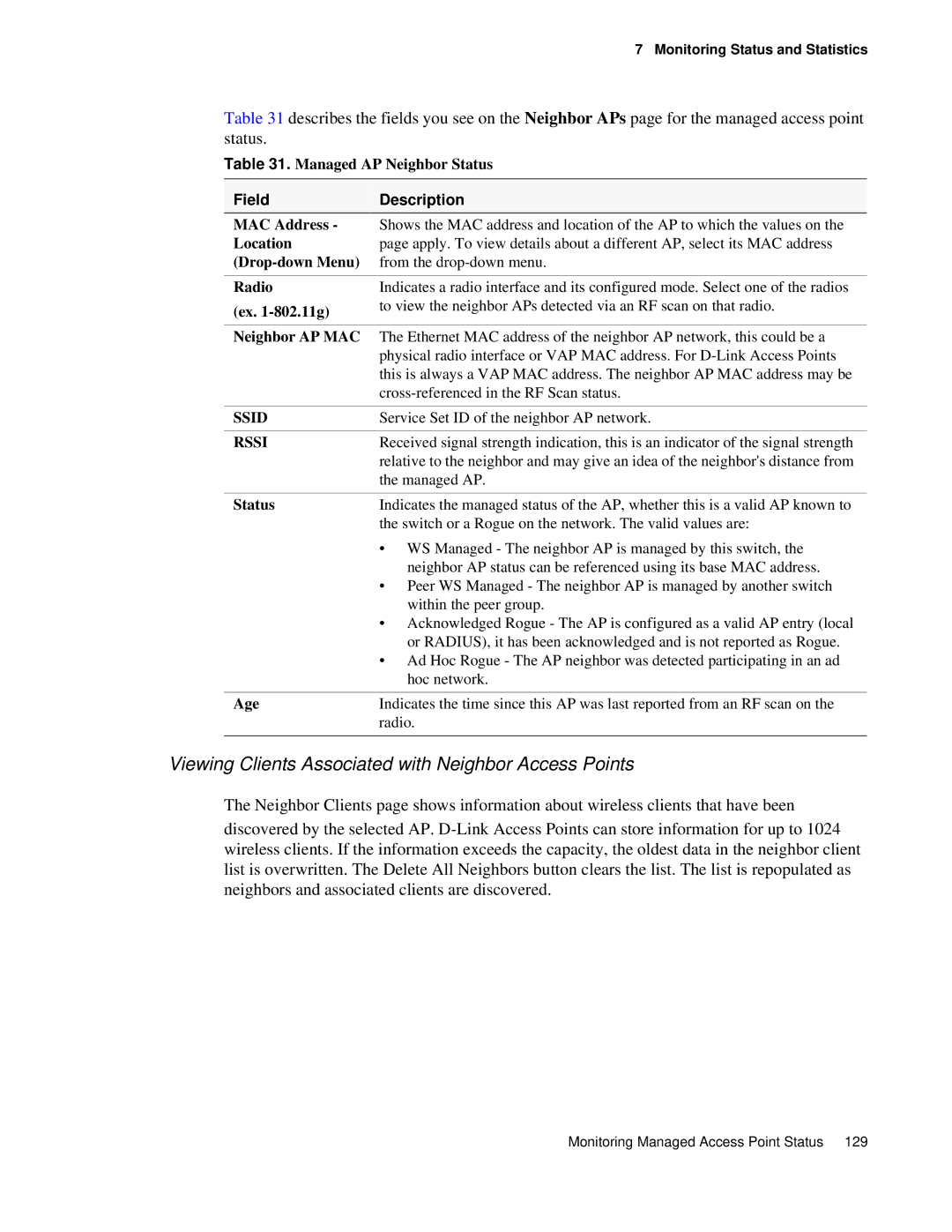7 Monitoring Status and Statistics
Table 31 describes the fields you see on the Neighbor APs page for the managed access point status.
Table 31. Managed AP Neighbor Status
Field | Description |
MAC Address - | Shows the MAC address and location of the AP to which the values on the |
Location | page apply. To view details about a different AP, select its MAC address |
| from the |
|
|
Radio | Indicates a radio interface and its configured mode. Select one of the radios |
(ex. | to view the neighbor APs detected via an RF scan on that radio. |
| |
|
|
Neighbor AP MAC | The Ethernet MAC address of the neighbor AP network, this could be a |
| physical radio interface or VAP MAC address. For |
| this is always a VAP MAC address. The neighbor AP MAC address may be |
| |
|
|
SSID | Service Set ID of the neighbor AP network. |
|
|
RSSI | Received signal strength indication, this is an indicator of the signal strength |
| relative to the neighbor and may give an idea of the neighbor's distance from |
| the managed AP. |
|
|
Status | Indicates the managed status of the AP, whether this is a valid AP known to |
| the switch or a Rogue on the network. The valid values are: |
| • WS Managed - The neighbor AP is managed by this switch, the |
| neighbor AP status can be referenced using its base MAC address. |
| • Peer WS Managed - The neighbor AP is managed by another switch |
| within the peer group. |
| • Acknowledged Rogue - The AP is configured as a valid AP entry (local |
| or RADIUS), it has been acknowledged and is not reported as Rogue. |
| • Ad Hoc Rogue - The AP neighbor was detected participating in an ad |
| hoc network. |
|
|
Age | Indicates the time since this AP was last reported from an RF scan on the |
| radio. |
|
|
Viewing Clients Associated with Neighbor Access Points
The Neighbor Clients page shows information about wireless clients that have been
discovered by the selected AP.
Monitoring Managed Access Point Status 129
